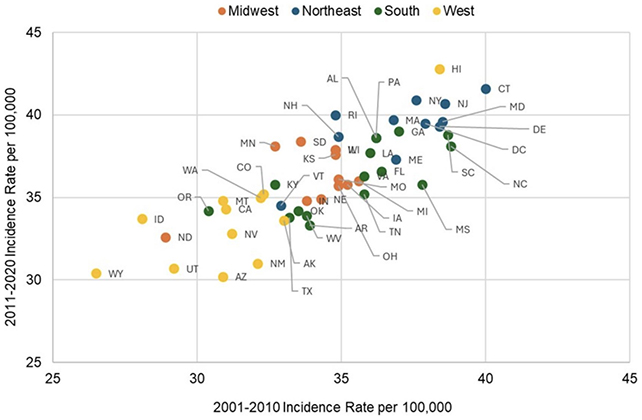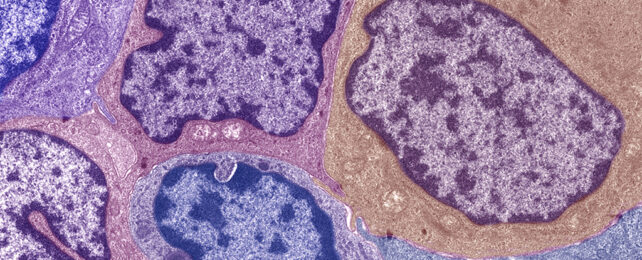Breast cancer cases in the US among women aged under 40 are jumping up by nearly half a percent each year, though new research by scientists at Columbia University suggests the rise isn't spread evenly across the country.
Understanding why breast cancer diagnoses are rising more steeply in some parts of the country than others could identify who is at greater risk, and possibly reveal ways to reduce the disease's incidence overall.
Previous research had identified a growth in invasive breast cancer cases among women across the US of 0.56 percent each year on average. Among those under the age of 40, the rise is even more alarming, jumping each year by more than 3 percent.
A new analysis of public health data from all 50 states gathered between 2001 and 2020 suggests breast cancer cases have remained stable or even dropped in some states, providing experts with useful regional reference points for working out the underlying causes of these worrying patterns.

"Breast cancer incidence is increasing in US women under 40, but until now, it was unknown if incidence trends varied by US geographic region," says lead author and epidemiologist Rebecca Kehm.
"Our findings can more accurately inform whether exposures that vary in prevalence across the US also contribute to breast cancer risk in younger women."
Now we know, for example, that incidence rates over the two decades studied have been highest in Maryland, New York, New Jersey, Hawaii, and Connecticut, and that the south was the only region where there was no increase in rates overall.
The study also offers some clarity over which groups of women at at the greatest risk of the disease. Across all regions, non-Hispanic Black women had the highest incidence of early-onset breast cancer, while non-Hispanic white women was the only group to show a statistically significant rise in rates in every part of the country.
It's not clear why these particular groups might experience higher numbers of diagnoses, but multiple factors are likely to be involved. We know, for example, that breast cancer risk is linked to exercise levels, hormonal contraceptives, and genetic variations.
"The increase in incidence we are seeing is alarming and cannot be explained by genetic factors alone, which evolve over much longer periods, nor by changes in screening practices given that women under 40 years are below the recommended age for routine mammography screening," says Kehm.
Cancer in young people is becoming more prevalent across all cancer types, with the number of deaths also rising: globally, cancer cases in 14 to 49-year-olds rose from 1.82 million in 1990 to 3.26 million in 2019.
If the trend is to be reversed, researchers need to distinguish which regions are at higher risk, making screenings, prevention, and treatment more personalized for each individual demographics.
"While the causes behind the rising incidence of early onset breast cancer are not yet fully understood, studying how trends vary across different population subgroups can offer valuable insights and help generate hypotheses for future research," says epidemiologist Mary Beth Terry.
"We are able to gain an understanding into the increase in breast cancer incidence among women who are not currently recommended for routine screening."
The research has been published in Cancer Causes & Control.
